Caragh Lodge
Houses within 15km of this house
Displaying 31 houses.
Houses within 15km of Caragh Lodge
Displaying 31 houses.
| House name | Description | |
|---|---|---|
| Killorglin Glebe | Rev. Robert Denny was leasing Killorglin Glebe to Rev. William de Moelyns at the time of Griffith’s Valuation, when it was valued at £16. The site now appears to be occupied by agricultural buildings. | |
| The Reeks or Baunclune | The McGillycuddy was in possession of the property at Whitefield at the time of Griffith’s Valuation when it was valued at £24 10s. Lewis and Leet also refer to Whitefield as a seat of The McGillycuddy in 1837 and 1814 respectively. Leet, however, also notes McGillycuddy Reeks as the address of McGillycuddy esq. In 1906 it was McGillycuddy property and valued at £24. Bary states that the house was originally known as The Reeks after the family title but that it was changed to Whitefield in the early 19th century by Richard McGillycuddy. However, on both the 1st and 25-edition Ordnance Survey maps it is labelled Baunclune. In more recent times it is known as The Reeks. This is how it is referred to by the Irish Tourist Association surveyor in the early 1940s who states that it was the the home of "Ross Kinloch, the MacGillycuddy of the Reeks and a member of Seanad Eireann". The house is still extant and occupied. |
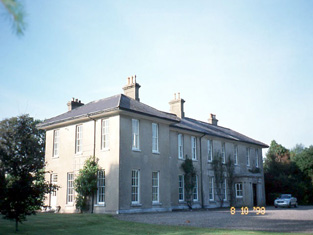
|
| Grenagh House | Denis Lawlor was leasing Grenagh House from Henry Herbert’s estate at the time of Griffith’s Valuation when it was valued at £23 15s. Lewis mentions Grena as the seat of John O’Connell in 1837. The Ordnance Survey Name Books indicate that it was built by Mrs. Delaney in 1792. Bary states that O’Connell was obliged to leave the house due to debts. It then came into the possession of Denis Shine Lawlor and later again, Daniel James. It was afterwards the property of the O'Connor family but has been ruinous since the mid twentieth century. | |
| Ballymalis | Christopher Gallway was leasing a property from John Sealy, which included a mill, at Ballymalis at the time of Griffith’s valuation. It was then valued at £34. It is labelled "paper mill" on the 1st edition Ordnance Survey map and as "woollen mill" on the 25-inch edition of the 1890s. An extensive range of buildings still exists at the site. Elsewhere in this townland is Ballymalis Castle, a tower house in existence since the sixteenth century and latterly, associated with the Eager family. | |
| Churchtown | At the time of Griffith’s Valuation, Sir A. Blennerhassett was leasing Churchtown House to Robert Stokes. In 1837 Lewis refers to it as the seat of Sir A. Blennerhassett. Leet mentions it as the residence of R.A. Blennerhassett in 1814. The house was valued at £31. Churchtown House is still extant. Much of the demesne is now part of Beaufort Golf Course. |
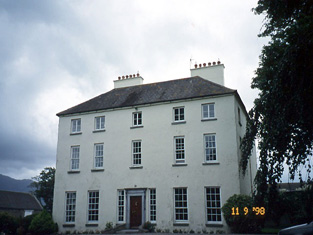
|
| Beaufort | Reverend Edward Day was in possession of the house at Beaufort at the time of Griffith’s Valuation when it was valued at £37. Lewis refers to it as the seat of Frederick W. Mullins in 1837. In 1814 Leet also refers to it as the residence of Reverend F. Mullins. In 1786 Wilson refers to Beaufort as the seat of Hon. Dean Crosbie. Various sources, including Bary, indicate that it was built on the site of a tower house known as Short Castle. . It was sold by the Mullins estate in the mid nineteenth century to the Day family who sold it again in the 1880s. Referred to by Slater in 1894 as the seat of Lt-Col. E. Nash Leahy. It is still extant and occupied. |

|
| Cullenagh House | At the time of Griffith’s Valuation, Cullenagh House was occupied by Kean Mahony when it was valued at £22. Lewis records it as the seat of Kean Mahony in 1837 as does Leet in 1814. In 1906 it was the property of Thomas McDonagh Mahony and valued at £18. Bary states that this house was probably built by the Mahonys towards the end of the 18th century. It was still extant but uninhabited towards the end of the twentieth century. | |
| Cullenagh Lower | Myles Mahony was occupying a house at Cullenagh Lwr at the time of Griffith’s Valuation. It was valued at £6 and part of a holding of 176 acres. The house is not shown on thre 25-inch Ordnance Survey map of the 1890s. | |
| Gortmaloon | James Breen was leasing a house valued at £8 15s along with 500 acres from the Landsdowne estate at the time of Griffith’s Valuation. The building is no longer extant. | |
| Glencar Hotel | John Breen was leasing a house valued at £7 5s along with almost 200 acres from the Landsdowne estate at the time of Griffith’s Valuation. On the 25-inch Ordnance Survey map of the 1890s, the building in this townland is labelled Glencar Hotel, which is still the name it is known by today. The hotel history indicates the property may initially been used as a hunting lodge for the Landsdowne estate. See www.glencarhouse.com. |

|
| Gortnaskarry House | At the time of Griffith’s Valuation, Michael Horgan was leasing a property at Gortnaskarry valued at £5 from the representatives of Denis Mahony. Bary speculates that it may once have been an inn. It is still extant. | |
| Gortnaskarry Cottage | Colonel Drummond was leasing a property valued at almost £5 to John Breen at the time of Griffith’s valuation. It is labelled Gortnaskarry Cottage on the 1st edition Ordnance Survey and remains by this name on subsequent editions.A house and farm are still extant at the site. | |
| Annadale | Lewis refers to Anadale as the seat of C. Colter in 1837. At the time of Griffith’s Valuation, Henry Blennerhassett was leasing a house at Annadale, parish of Killorglin, valued at £11 10s from a Mr. Thompson. Bary states that this is likely to be Peter Thompson whose wife was a Blennerhassett. The house is still extant though possibly not inhabited. | |
| Mount Rivers (Killorglin) | This property at Annagarry is mentioned by Lewis in 1837 and Leet in 1814 as a residence of R. Blennerhassett, though the latter refers to the house as Mount Rivers. It is named on the 1st edition OS Map as Mount Rivers. At the time of Griffith’s Valuation it was being leased by Robert Blennerhassett but was in the Court of Chancery. It was then valued at £17 15s. Bary states that there is no trace of it now. | |
| Ballynakilly | Lady Anne Headley was leasing this property, valued at £6 5s,to Andrew Talbot at the time of Griffith's Valuation. Farm buildings still exist at the site. | |
| Curra Mill | Lady Anne Headley was leasing a property valued at £16, including a mill, to Francis Turies, at the time of Griffith's Valuation. Though it appears on the 1st edition Ordnance survey map the mill is not shown on the 25-inch editon Ordnance Survey map of the 1890s and the West Kerry branch line of the Great Southern & Western Railway is very close to the site. | |
| Inchareagh Lodge | Andrew Talbot was leasing this property, valued at £16 5s, from Lady Anne Headley, at the time of Griffith's Valuation. Bary states that the Eager family had resided here until the early nineteenth century. Later it became the residence of one of Lady Headley's employees. It now forms a complex of buildings, some of which are modern and some much older. | |
| Lickeen | James O'Connell was leasing Lickeen House, valued at £11 15s, to Francis Newton at the time of Griffith's Valuation. Bary states that the second of two houses at this site was built by Francis Newton in the mid-nineteenth century but that the original Lickeen House is much older. Later the Eager family lived here. Lickeen House is still extant and occupied. | |
| Buncar House | The representatives of Rev. Denis Mahony were leasing this property to John O'Dowd at the time of Griffith's Valuation, when it was valued at £9 15s. Bary states that the Mahonys may orginally have built the house as a hunting lodge, perhaps at the beginning of the nineteenth century. It was enlarged several times afterwards and had several different owners. It is still extant though in need of renovation. | |
| Knocknaman | Henry Denny was leasing a property valued at £9 to William Thompson at the time of Griffith’s Valuation. An uunamed house, surrounded by trees, is marked on the 1st edition OS map. There is no house at this site now. | |
| Abbeylands or The Abbey | Abraham Huggard was leasing this property from Sir William Godfrey at the time of Griffith's Valuation when it was valued at £5 10s. Local sources suggest it was built by the Huggard family in the early nineteenth century. It is still extant and occupied. | |
| Kilburn House | Edward Godfrey was leasing Kilburn House to John W. Bonner at the time of Griffith's Valuation, when it was valued at £11 5s. Bary states that this property was owned for much of the nineteenth century by Reverend William Godfrey and his wife, Lucy Day but was usually let to a tenant. The property is still extant and now a farmhouse B&B run by the Leane family. See www.stayatkilburn.com |
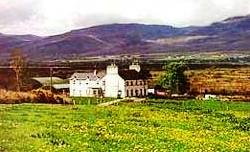
|
| Kilcolman Abbey | Kilcoleman Abbey was the residence of Sir William Godfrey at the time of Griffith's Valuation, when it was valued at £33. Lewis also records it as his residence in 1837. In 1894 Slater referred to it as the seat of Sir John F. Godfrey. In 1906, it was still part of the Godfrey estate and valued at £35 10s.The Irish Tourist Association survey of the early 1940s refers to it as "Godfrey House, a fine type of Elizabethan type mansion". Bary states that the original house, built by the first Godfrey to settle in the area at the end of the seventeenth century, was called Bushfield but that it burned down in 1774 though Wilson still refers to it by this name in 1786 and provides a detailed description of the surroundings. Knightly indicates that a new house was then built by Sir William Godfrey. This house was remodelled twice in the nineteenth century. Sir William Maurice Godfrey sold Kilcoleman in the 1960s and it was demolished in 1977. |
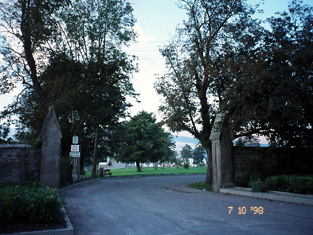
|
| Rathpoge | At the time of Griffith's Valuation, Sir William Godfrey was leasing this property to William Hickson. No house is marked in this area on the Ordnance Survey map, the only buildings being the Kilcolman farmyard. The buildings on the site were valued at £13. It was still in the possession of the Godfrey estate in 1906 with the same valuation but are no longer extant. | |
| Killeen House (Kilcolman) | William Miles was leasing Killeen House from the Leeson estate at the time of Griffiths Valuation, when it was valued at £15 5s. Bary states that the Myles family were associated with this house since the eighteenth century and continued there up to the 1880s. Later occupants demolished the house due to its poor condition. | |
| Callanafersy House A | Robert Leeson was leasing Callanafersy House to Ephraim Williams at the time of Griffith's Valuation, when it was valued at £12 5s. Bary indicates that this house was leased by the Williams family and probably had been built by them earlier in the nineteenth century. It is still extant and occupied. | |
| Callanafersy House | Richard J. Leeson-Marshall built Callanafersy House around 1861 and the family continued to own the house until well into the twentieth century. It is still extant and occupied. |
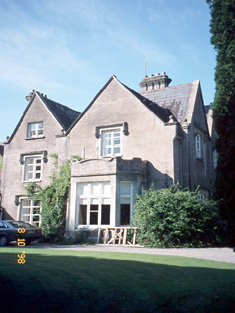
|
| Glen Ellen (Kilcolman) | James Godfrey was leasing this property from Lord Monteagle's estate at the time of Griffith's Valuation, when it was valued at £11 10s. Bary indicates that it was in the possession of a branch of the Godfrey family up until the end of the nineteenth century when it was then sold to the Huggard family. Slater notes it as the residence of Jn. T. Huggard in 1894. It has had several owners since then but is still extant and occupied. | |
| Altavilla | Robert Rae was the owner of this property at the time of Griffith's Valuation, when it was valued at £5 5s. It is named as Altavilla on the 1st edition Ordnance Survey map. In 1837 Lewis refers to Ardmoniel Cottage, the seat of R. Rae, but also to Altavilla, residence of J. Morrogh. Bary mentions that Altavilla was associated with the Morrogh family. It was later the residence of the Dodd family and is still extant. | |
| Reeks View | Rev. William de Moleyns was leasing this property from Lord Ventry's estate at the time of Griffith's Valuation, when it was valued at £4 15s, on a holding of 140 acres. It appears on the 1893 edition of the Ordnance Survey map as Reeks View. It is still extant. | |
| Glenbeigh Towers | In 1906 the representatives of Rowland Winn were the owners of a house valued at £36 at Killnabrack, in the parish of Glanbehy. Bary identifies this as Glenbeigh Towers, built in the medieval castle style in the late 1860s. It is now a ruin. |

|

